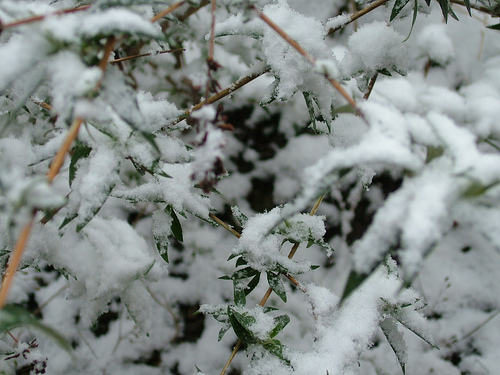 |
Cold Hardiness - pushing the Envelope - part 1
- part 1
There comes a time when every gardener sees a plant they just gotta have but, alas, it's not cold-hardy in their zone. What is one to do??
While in Tampa many of us successfully grew some zone 10 plants while residing in a zone deemed too cold for them. This occurs around the country throughout all of the USDA hardiness zones. What's up with that and how can you "push the envelope"??
First we need to understand that the zone map is based upon AVERAGE winter low temperatures not the occasional extremes. Lots and Lots of data compiled over the years in there and a new updated version with the latest data is due for release this year.
Ok, let's talk low temperatures for a bit. When your super-accurate local TV meteorologist (don't get me started here, that's another rant!) says the low will be 10 degree F that means one thing. The OTHER important item is how long will it be 10 degree F?? How cold it gets and how long it stays cold whether measured in hours, days or weeks is of critical importance in the survivability of a "marginal" plant. That's because the plant's damaged cells can heal if not overly exposed. Longer exposure increases cell damage to the point that healing is impossible and death occurs. To make things even more complicated every plant has different tolerances.
Stay with me, there's more... because now we have to start factoring in precipitation - frozen or rain!
Florida's rainy season is summer when it is hot. Arkansas' rainy season is winter when it is cold. Wet, more often than frozen - BIG DIFFERENCE!
Warm months connote the growing season for plants while cold months are considered the dormant season. Many plants can tolerate cold but they cannot survive cold, wet, rain in the dormant season.
Snow is different than rain. Snow insulates plants (think igloo here) from normally deadly cold temperatures. What about ice you ask? Ice is bad news - not only does it cause plants to break, but layers of ice keeps oxygen from reaching the soil.
The ability of a plant survive cold is also tied in to other factors as well. (Like you're not already confused) Autumn's temperatures drop gradually into winter so plants are slowly acclimated to cold. This is called "hardening off" and plants exposed to sudden cold without hardening off can die. This also occurs with a late spring freeze when plants that have been out of dormancy for quite a while are nailed with an extended hard freeze. (This happened here in Arkansas during Easter a couple of years ago with damage in mega-millions of dollars.)
Another way plants die from cold is a lack of summer heat. Say What??? That's right, summer heat. Plants accustomed to a higher hardiness zone depend on those warmer temperatures to increase their sugar production. That in turn better enables the plant to handle the stress of cold. Pay attention Seattle and parts of the left coast - I'm talking to you! You need to be aware of this stuff if you want to "push the envelope" and grow plants south of your hardiness zone.
In part 2 of the article, which I'll post later, I'll tell you how to push the envelope and share some tricks to insure your success.
Until then, don't be afraid to try something you gotta have this spring.